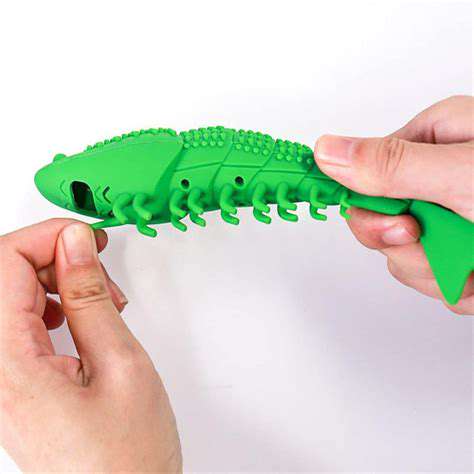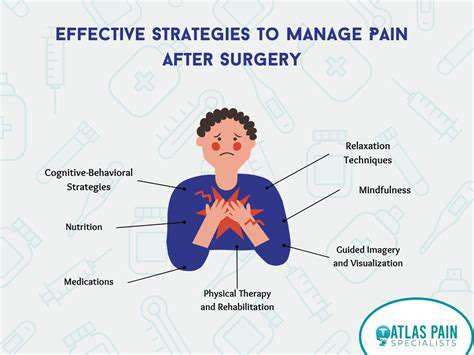How to Teach Your Cat to Walk on a Leash
Preparing Your Cat for the Leash Experience

Essentials for a Successful Leash Training
Before you even think about putting a leash on your feline friend, it's crucial to understand that Cats are not naturally leash-trained animals. They have a completely different way of interacting with the world, and forcing them onto a leash without proper preparation can lead to stress and anxiety. This initial phase is all about building a positive association with the leash, harness, and the overall experience of being outdoors on a leash. This will set the tone for a more enjoyable and less stressful experience for your cat.
Thorough preparation is key to a successful leash training journey. This involves gradually introducing your cat to the equipment, ensuring they feel comfortable and safe with the sensation of the harness or collar. It's important to remember that cats, unlike dogs, don't instinctively understand the concept of walking on a leash. They need to be taught and rewarded for cooperation. Patience and positive reinforcement are paramount in this initial process.
Introducing the Leash and Harness
Start by placing the harness or collar on your cat when they are relaxed and in a familiar environment. Let them wear it for short periods, gradually increasing the time as they become accustomed to it. Don't rush this process; it's about building trust and comfort. If your cat shows any signs of discomfort, immediately remove the harness or collar and try again later.
Allow your cat to explore the harness or collar in their own time. You can also try associating the harness or collar with positive experiences, like offering treats or praise. This will help build positive associations with the equipment.
Understanding Your Cat's Body Language
Cats communicate through subtle cues, and it's essential to learn to recognize them. Pay close attention to their body language, such as their tail position, ear position, and overall demeanor. A relaxed cat with a soft tail and ears pointing forward is a good sign. Distressed or anxious cats will show signs like a puffed tail, flattened ears, or hissing.
Learning to recognize these cues will help you understand your cat's comfort level and allow you to adjust your training approach accordingly. If your cat shows signs of stress, immediately stop the training session and try again later.
Building Positive Associations
Rewarding positive behaviors is crucial in cat training. When your cat tolerates the harness or collar without resistance, praise them and give them a treat. This positive reinforcement will encourage them to associate the equipment with pleasant experiences. This creates a strong foundation for future training.
Consistency is also key in building positive associations. By repeating the process and rewarding positive responses, you can reinforce the positive link between the harness or collar and pleasant experiences. This approach makes the process more enjoyable and less stressful for your cat.
Gradual Exposure to the Outdoors
Once your cat is comfortable with the harness and leash indoors, you can begin to take them outside in a secure and controlled environment. Start with short, supervised sessions in a familiar area. Allow them to explore at their own pace. Avoid overwhelming your cat with too much stimulation at once. Gradually increase the duration of the outings as your cat becomes more comfortable.
Keep the initial outdoor sessions short and sweet. This helps your cat adjust to new sights, sounds, and smells gradually. Avoid highly stimulating environments in the beginning and gradually expose your cat to more complex settings.
Training Techniques and Patience
Patience is the most important trait for cat owners who are leash training. Cats learn at their own pace, and rushing the process can lead to frustration and setbacks. Be prepared for setbacks and remember that your cat may not be ready for leash training right away. Positive reinforcement techniques, such as rewarding your cat with treats or praise, are highly effective.
Remember, consistency and patience are key. Don't get discouraged if your cat doesn't immediately take to leash training. Keep practicing, and celebrate small victories along the way. Focus on creating a positive and rewarding experience for your cat.
Troubleshooting Common Challenges and Maintaining Momentum

Identifying and Resolving Software Glitches
Software glitches can range from minor annoyances to major disruptions, impacting productivity and user experience. Understanding the common causes of these issues is crucial for effective troubleshooting. Often, these glitches are related to compatibility problems between different software applications or outdated system drivers. Careful analysis of error messages and logs can provide valuable insights into the nature of the problem and guide you towards a solution.
Troubleshooting steps often involve restarting the affected application or the entire computer. Checking for updates to the software and drivers is also a critical step in resolving these issues. Sometimes, a simple update or reinstallation can solve the problem effectively.
Network Connectivity Problems
Network connectivity problems can stem from various sources, including faulty cables, incorrect configurations, or even interference from other devices. Identifying the specific cause is often the most challenging aspect of troubleshooting these issues. Checking the physical connections and ensuring that the network settings are properly configured are important first steps.
If the problem persists, consider checking for network conflicts, investigating potential hardware issues, or contacting your network administrator for further assistance. A systematic approach, starting with the basics, is often the most efficient way to pinpoint the root cause of the problem.
Hardware Malfunctions
Hardware malfunctions can manifest in various ways, from minor performance issues to complete system failures. Diagnosing these problems can be challenging, sometimes requiring specialized tools or expertise. Proper identification of the faulty component is crucial for effective repair or replacement. Symptoms like unusual noises, flickering screens, or unresponsive peripherals can indicate potential hardware problems.
Checking the device drivers, running diagnostic tools, or consulting the manufacturer's documentation can help in determining the exact source of the issue. Careful attention to detail is often required to pinpoint the specific component causing the problem.
Data Loss and Recovery
Data loss can be devastating, especially if crucial information is lost. Understanding the potential causes of data loss, such as accidental deletion, hardware failure, or malware attacks, is essential for prevention. Regular data backups are critical to mitigate the risk of data loss. Implementing a robust backup strategy, including both local and cloud-based backups, is an important step to ensure data safety.
Restoring data from backups can be complex, and proper procedure is essential to avoid further complications. Professional data recovery services may be necessary in cases of severe data loss. Understanding different data recovery methods and techniques can help you choose the appropriate approach for your situation.
Security Threats
Security threats, such as malware and phishing attacks, can compromise your system's integrity and expose sensitive data. Proactively implementing security measures is crucial to mitigate these risks. Regular software updates, robust antivirus protection, and strong passwords are essential for safeguarding your system.
Ensuring that your operating system and applications are up to date is a crucial first step in preventing security breaches. Educating yourself and your users about security best practices can help reduce the risk of attacks. Using strong, unique passwords and avoiding suspicious links or attachments are important preventative measures.
Performance Issues
Performance issues can stem from various factors, including resource limitations, software conflicts, or inefficient system configurations. Identifying the underlying cause is key to resolving performance problems. Investigating system resource usage, analyzing CPU and memory utilization, and checking for potential conflicts between installed applications can provide clues.
Optimizing system configurations, upgrading hardware components, or implementing effective resource management strategies can significantly improve system performance. Regular maintenance, including cleaning up temporary files and unnecessary programs, can also contribute to a smoother and more responsive system.
User Interface Problems
User interface (UI) problems can range from minor usability issues to severe accessibility problems. Understanding the principles of good UI design and user experience can help you identify and resolve UI problems. Thorough testing of the UI, involving diverse user groups, is essential to identify potential usability issues. Addressing UI problems can significantly improve user satisfaction and productivity.
Ensuring clear and concise instructions, intuitive navigation, and visually appealing design elements is vital. Implementing effective feedback mechanisms to gather user input and address concerns is crucial for ongoing improvement.
Read more about How to Teach Your Cat to Walk on a Leash
Hot Recommendations
- Review: [Specific Brand] Small Animal Cage
- Why Rescuing Pets Saves Lives
- Best Pet First Aid Kits [What to Include]
- How to Help Stray Animals in Your Community
- Guide to Adopting a Pet When You Have Kids
- Top Reptile Heat Lamps
- Heartwarming Rescue Stories That Will Inspire You
- Review: [Specific Brand] Bird Cage
- Best Aquarium Filters [2025 Review]
- Review: [Specific Brand] Smart Litter Box











![The Funniest Thing My Dog Did Today [Pet Story]](/static/images/33/2025-08/LessonsLearned28andSausage-Related29.jpg)